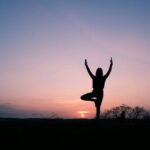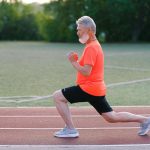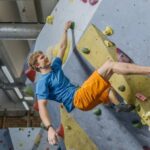Dynamic balance exercises are a cornerstone of both fitness routines and rehabilitation programs, enhancing the body’s ability to remain stable during movement. Balance—a fundamental skill for daily activities—relies on the complex interplay between the sensory systems, musculoskeletal framework, and neurological pathways. The importance of dynamic balance extends beyond simple tasks; it is crucial for athletes who require stability during fast-paced, unpredictable actions, as much as it supports older adults in preventing falls.
Balance exercises are not only about standing on one leg with eyes closed. They encompass a variety of movements that train the body to control its center of gravity over a changing base of support. This includes single-leg deadlifts, squats, and Bulgarian split squats, which challenge and improve stability. A well-structured balance program progressively introduces exercises that replicate real-world scenarios, facilitating the body’s adaptability and improving coordination.
Regular practice of dynamic balance exercises leads to lasting improvements. These exercises help stabilize the core muscles, improve coordination, and enhance joint mobility. They serve as a proactive measure to maintain health, prevent injuries, and in some cases, can even enhance athletic performance. Thus, incorporating these exercises into one’s routine is not only beneficial but essential for overall physical well-being.
Fundamentals of Balance Exercises
In the realm of physical health and fitness, dynamic balance plays a pivotal role, impacting everything from day-to-day activities to advanced athletic performance. This section delves into the essentials of balance exercises.
Understanding Balance and Its Importance
Balance is the body’s ability to maintain its center of gravity over its base of support. A person’s quality of life can be significantly affected by their balance, as it influences mobility, posture, and overall stability. Good balance is essential for coordination and the efficient performance of both simple and complex movements. It relies on a combination of systems, including sensory input, control mechanisms in the brain, and muscle response, known as proprioception. The importance of balance cannot be understated—it’s a foundation for all physical activities and is especially crucial in preventing falls and maintaining independence among older adults.
Core Elements of Dynamic Balance
Dynamic balance exercises require coordination and the ability to control one’s body position while moving. The core strength is central to maintaining dynamic balance. It acts as the body’s stabilizer, so strengthening it is a key strategy for improving balance. Dynamic balance exercises can range from simple tasks, like heel-to-toe walking, to complex ones involving exercise equipment like a BOSU ball, which can be used with either the flat or ball side up.
| Element | Description |
|---|---|
| Center of Gravity | Mastery in managing the shift in body’s weight is crucial. |
| Stability | Required in order to reduce the risk of falls and injury. |
| Control | Control over body movements allows for finer motor skills. |
By incorporating balance training into regular exercise routines, individuals can expect improvements in their equilibrium, enhancing their ability to perform daily tasks with greater ease and confidence.
Dynamic Balance Exercises
Dynamic balance exercises focus on one’s ability to maintain stability while in motion, enhancing coordination and functional strength. They are an essential component of fitness regimes for people of all levels, from beginners to athletes.
Basic Movements for Beginners
For those starting out, basic movements can establish a foundation for good balance. A simple Single-leg balance can be initiated by standing on one leg while maintaining an upright posture, which should be held for 30 seconds before switching legs. The Flamingo stand advances this by adding arm movements to further challenge stability.
Advanced Techniques for Improved Balance
As one’s balance improves, incorporating Tai Chi can offer a series of fluid motions that emphasize weight shifts and controlled body movements for enhanced dynamic balance. The Heel-toe walk involves walking in a straight line with the heel of one foot touching the toes of the other, improving coordination and stability.
Dynamic Balance Workouts for Athletes
Athletes may benefit from more challenging routines like the Tightrope walk, where they walk along a line while maintaining arm positioning to aid balance. The use of a Balance board can introduce an unstable surface to the exercise, systematically improving the ability to quickly react and maintain balance during unexpected shifts in movement.
Incorporating Equipment
Incorporating equipment into balance exercises can significantly enhance the effectiveness of a workout by introducing an unstable environment that challenges and improves stability.
Utilizing Stability Tools
Bosu Balls and Stability Balls become invaluable equipment for fostering dynamic balance. The Bosu ball, with its dome-shaped elastic surface, offers a platform where one can perform squats or step-ups, adding an extra challenge and engaging core muscles more intensively. Similarly, a stability ball, also known as an exercise ball, allows for an array of exercises. Working out on these balls, whether sitting or lying, demands that the body maintain equilibrium, thus improving balance and core strength.
- Examples:
- Standing next to a Bosu ball, step onto the flat platform, feet shoulder-width apart.
- While seated on a stability ball, perform upper-body exercises with dumbbells to challenge balance.
Weights and Resistance Training
Incorporation of weights, such as dumbbells, into balance training can further engage muscles and stabilize joints. The act of holding dumbbells while executing balance-focused movements on an unstable surface increases the difficulty level, forcing muscles to adapt to maintain balance.
- Examples:
- Single-leg deadlifts with a dumbbell.
- Squats on a stability ball while pressing dumbbells overhead.
Using weights not only develops muscular strength but also trains the nervous system to cope with varying stability demands. This integration of equipment into balance routines helps athletes and individuals alike improve dynamic stability for both everyday activities and athletic performance.
Balance Training for Special Populations
Balance training is not a one-size-fits-all approach. Special populations, particularly older adults and individuals with various conditions, require tailored programs to improve balance, prevent falls, and maintain independence.
Exercises for Older Adults
Older adults can benefit immensely from balance exercises, as these activities strengthen muscles, improve proprioception, and ultimately reduce the risk of falls. A recommended balance training program for this demographic should involve:
- Standing Balance Exercises: Such as single-leg stands and tandem stands, typically performed three times a week for optimal results.
- Dynamic Balance Activities: Involving heel raises, narrow-stance reaches, and mini lunges to engage and strengthen the core and lower body.
- Sequence Training: Including multi-directional movements like lateral stepping, which promotes neuromuscular coordination.
These exercises should be progressive, starting with less challenging tasks and gradually increasing in difficulty to challenge balance safely.
Adaptive Exercises for Various Conditions
Individuals with conditions such as multiple sclerosis and stroke may require specially adapted exercises to accommodate their unique challenges related to balance.
- For Multiple Sclerosis: Incorporate activities that focus on weight shifting and trunk control, also utilizing visual cues and tactile feedback to enhance proprioception.
- Post-Stroke Rehabilitation: Balance training often includes tasks that retrain the brain by emphasizing weight distribution and coordination exercises. It may also involve the use of support equipment to ensure safety and build confidence.
These adaptive exercises aim to assist individuals in maintaining as much independence as possible while addressing balance issues specific to their conditions.
Enhancing Physical Fitness
Incorporating balance exercises into one’s fitness regimen not only improves stability but also integrates strength training and flexibility, leading to overall enhanced physical fitness. Effective workout plans hinge on the harmonization of diverse training methods, including cardio and balance as well as strength training with a focus on flexibility.
Combining Cardio with Balance Training
Cardiovascular activities are essential for increasing heart rate and endurance, and when combined with balance training, they can create a more dynamic workout. Stair climbing, for instance, elevates the heart rate while challenging balance. Yoga too offers a unique marriage of balance-focused postures and cardiovascular benefits, as transitions between asanas can mimic the continuous motion found in traditional cardio workouts.
- Workout Plan Example:
- Monday: Brisk walking with intermittent balancing on one foot
- Thursday: Yoga sequences that include transitioning from standing to balancing postures
By blending balance challenges within cardiovascular activities, individuals are likely to experience not just increased endurance but enhancements in their coordination and athletic performance in sports.
Strength Training and Flexibility
Flexibility and strength are cornerstones of a well-rounded fitness routine. Exercises such as single-leg deadlifts directly engage the core and lower body muscles, enhancing balance and building muscular strength. Furthermore, flexibility-focused practices like stretching and certain types of yoga aid in the maintenance of muscle elasticity, which is integral to preventing injuries and ensuring fluid body movements.
- Fitness Components Addressed:
- Strength: Through resistance training and bodyweight exercises
- Flexibility: Through stretches and flexibility-enhancing yoga postures
Regular inclusion of both components in one’s workout plan is beneficial for overall physical fitness, paving the way for better performance in daily activities and sports, while also contributing to a strong, supple physique capable of maintaining balance under various conditions.
Improving Athletic Performance
Athletic performance can be significantly enhanced through a dedicated focus on balance exercises, which are vital for optimal coordination and strength in dynamic sports.
Balance in Sports and Competition
In competitive sports, athletes often rely on their ability to maintain balance during complex movements. Balance training is designed to improve an athlete’s core stability and proprioception, which is the body’s capability to sense movement and position. Such training is not merely about staying upright but also about enhancing the control and precision of an athlete’s movements. Dynamic balance exercises, which require constant adjustment of one’s center of gravity, can lead to better performance in sports such as gymnastics, soccer, and basketball where quick, multidirectional movements are fundamental.
- Example exercises include:
- Single-leg stances
- Bosu ball drills
- Stability pad workouts
Conditioning for Dynamic Sports
For sports that involve rapid changes in movement, balance conditioning is effectively combined with strength training to bolster an athlete’s agility and muscle response. Strength training aims to improve muscle power and endurance, while balance exercises develop the neuromuscular coordination necessary for dynamic sports. Incorporating balance routines in a conditioning program helps athletes adapt to varying physical demands, reducing the risk of injury and improving response times.
- Benefits for athletes:
- Increased agility: Quick and controlled body movements.
- Enhanced coordination: Efficient movement synchronization.
Athletes can perform compound movements, like squats on an unstable surface, to challenge their balance while simultaneously building strength. Balance-based plyometrics can also be beneficial, as they integrate explosive strength exercises with the need to maintain stability after each jump or bound.
Preventative and Therapeutic Aspects
Balance exercises play a critical role in both the prevention of injuries and in therapeutic recovery processes. They are integral in enhancing quality of life by reducing fall risk and improving independence.
Balance in Injury Prevention and Recovery
Balance training is particularly effective in preventing falls, which are a major health concern, especially in the elderly. A regimen of balance exercises can lead to improved good posture, stronger lower back muscles, and heightened proprioception. These benefits collectively contribute to a sturdier stance and reduced fall risk. Static balance exercises, like the single leg balance, are foundational techniques that help prevent injury by improving an individual’s stability.
When recovery from injury is necessary, these exercises serve a therapeutic function by safely guiding individuals back to their pre-injury independence levels. By focusing on balance, patients may experience a decrease in fall risk during their recovery period and may regain functionality more effectively.
Guidance from Health Professionals
Working with a physical therapist or other qualified health professional is crucial for tailored balance exercise programs. They assess individual fall risk factors and develop a balance training protocol that aligns with recommendations from authoritative health organizations, such as the American Heart Association.
A physical therapist’s guidance ensures that balance exercises are performed with correct technique, which is essential for both injury prevention and recovery. They can prescribe an array of dynamic exercises, gradually progressing the challenge to match improvements in stability and strength, thereby optimizing the therapeutic benefits of balance training.
Professionals in therapy and rehabilitation use evidence-based practice to enhance quality of life and promote greater independence in their patients through structured balance exercises.
Resources and Guidance
For individuals seeking to enhance their physical ability and improve posture through dynamic balance exercises, a variety of resources are at their disposal. Books and articles by reputable sources such as the American Heart Association provide valuable insights and exercise plans. They advocate for activities that challenge balance while ensuring safety and gradual progression.
Techniques to Consider:
- Yoga Poses: Incorporating yoga can be profoundly effective for balance. Poses varying in difficulty from beginner to advanced cater to different skill levels.
- Chair Leg Raises: These exercises can be done at home, using a chair for support, to improve stability.
- Side-Stepping: This simple technique can be integrated into daily routines, offering a practical method to strengthen lateral movement.
A Practical List to Get Started:
- Single Leg Cross-Body Punches: Engages multiple muscle groups and fosters coordination.
- Musical Statues: A fun activity that incorporates dynamic balance through unpredictable movement patterns.
Guidance for Practice:
When beginning a balance-focused exercise regimen, it is recommended to:
- Start slow with simpler exercises.
- Focus on form to reduce the risk of injury.
- Gradually increase the duration and complexity of exercises.
For personalized advice, it is advisable to consult a physical therapist who can tailor an exercise plan suitable for one’s specific needs. Remember, consistency and dedication are key to seeing improvements in dynamic balance.








